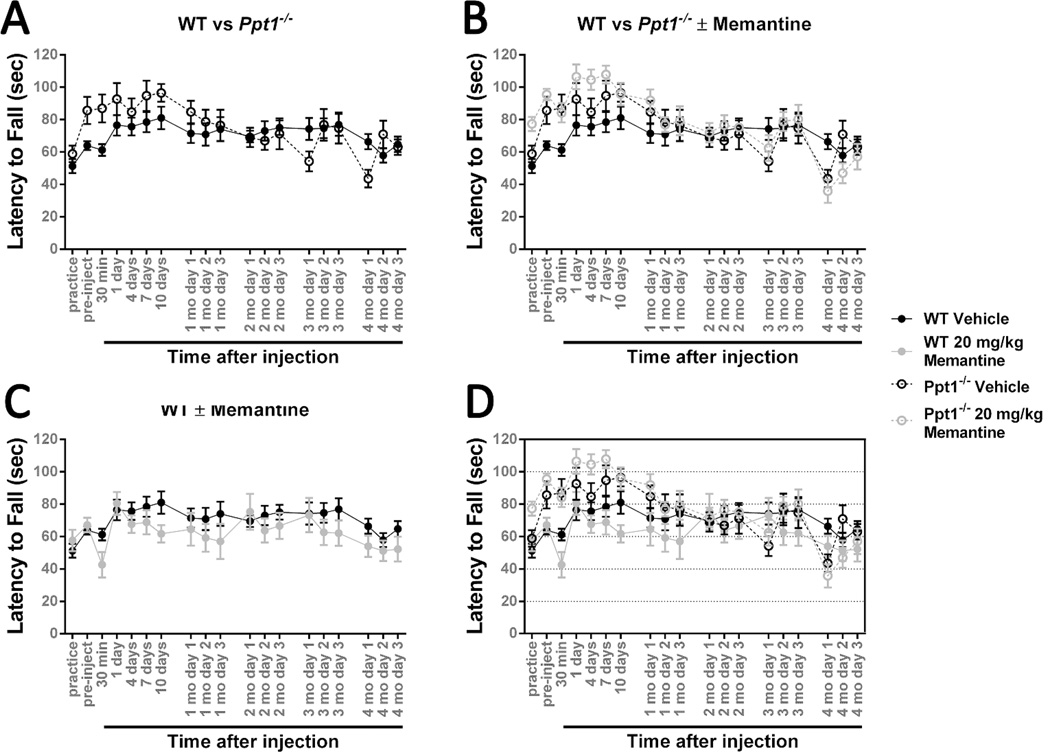Figure 3.
Treating 3-month-old Ppt1−/− mice with 20 mg/kg memantine has no effect.
An accelerating rotarod (0-40 rpm in 120 seconds) was used to measure the motor skills of Ppt1−/− and wild-type (WT) mice. Mice were intraperitoneally injected with the NMDA receptor antagonist memantine (20 mg/kg) or a vehicle control (physiological saline) at 3 months of age and reevaluated on a monthly basis. (A) There is no significant difference between Ppt1−/− and wild-type mice when exposed to this testing paradigm. Vehicle-treated populations are the same as those shown in Figure 2. (B) Treatment with 20 mg/kg memantine at 3 months of age does not significantly affect Ppt1−/− performance. (C) Treatment with 20 mg/kg memantine at 3 months of age does not have a significant effect on wild-type mice. Panel D is an overlay of the previous data sets. Data points represent mean ± S.E.M. of the time mice were able to stay on the rod. Two-way ANOVA was used to compare vehicle-treated wild-type mice to other conditions and to compare treated and untreated Ppt1−/− populations. Wild-type vehicle, n = 8; Ppt1−/− vehicle, n = 7; wild-type memantine, n = 5; Ppt1−/− memantine, n = 5.

